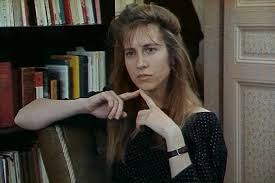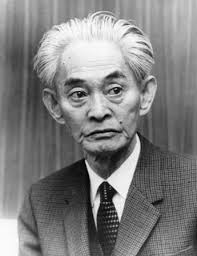THE EARTH’S MIGHTIEST APOLOGISTS
I recently read a book of the late German philosophy Hans-Georg Gadamer’s interviews by Riccordo Dottorri, a former student of Gadamer’s at Heidelberg University. Dottori is a well-known Hegel expert in his own right but conducted these interviews as a tribute to his teacher. I have always felt that Gadamer’s importance as a philosopher has not been properly acknoweldged; never a flashy or trendy public figure, he was a peacemaker at heart who reconciled German Idealism with Ancient Greek philosophy. The reading public, even when it comes to relatively niche topics like continental theory, tends to thrive on conflict and professional intrigue. We love to buy into the clannish, competitive dynamic between different schools of thought. Gadamer has always been kind of the antithesis of this pro-wrestling side of his field; he fostered dialogue with all of his contemporaries and, since he lived to over a hundred years old, this included most of the luminaries of twentieth century continental philosophy.
Gadamer’s insight into the distinction between pure rhetoric (rhetoric without regard to truth) and synesis (rhetoric and dialogue in pursuit of truth) allowed him to navigate complex ontological, ethical and political questions. His concept of “horizon-fusion” (wherein one must try to share the perspective of the dialogical other) meant that his debates tended to conclude in mutual agreement or, failing that, in an easy-going impasse. However, as far as his wider reputation is concerned, Gadamer remains caught in the shadow of his former teacher Martin Heidegger, who is, of course, one of the most deeply impressive and resented figures in modern philosophy. Heidegger’s infatuation with National Socialism is impossible to overlook or justify no matter how it is framed. At the same time, his writings must be considered one of the most important contributions to twentieth century thought both in terms of their originality and their influence. Unsurprisingly, most contemporary theorists do not openly admit their indebtedness to this work given the connotations that have been attached to it. As such, they have avoided Gadamer’s fate of being perceived as a perennial sidekick.
Gadamer rejected National Socialism. He even worked in East Germany for a time (prompting some others, including Karl Jaspers, to dismiss him as a Communist) but would not cut ties with Heidegger. Years later, Gadamer attempted to bring his former supervisor back into the academic system and to involve him in modern debates. This gesture of forgiveness and gratitude to his mentor proves that Gadamer was at least a true Platonist, though it did not improve the reputations of either man. Gadamer is sometimes said to have a conservative view of his field, a charge that is difficult to dispute given that his interest tended towards Plato and Aristotle or to Enlightenment thinkers like Hegel or Schleiermacher. Politically speaking, there is little reason to consider him conservative. He saw the inescapable value of historical context, not just for its own sake but as a way of addressing life’s transience. Change is essential but so is the ability to grasp the lessons of the past, whether it be the far-off historic past or a regrettable day last week. As Gadamer states:
In a particular instance I could ask myself, “Have I done the right thing?” —which I acknowledge after the fact — or, “Have I not done the right thing?” What I have done in each instance is just as true — it all happened in exactly the same way. But it’s not simply a question of the bare truth — whether or not I did this or that; instead, it’s a question of the way in which I can explain the action — that is, whether or not I did something right in the sense of something just, something that I can justify to myself and to the other. We can always try, of course, to give an answer in either the first way or in the second; but subsequently we become aware that it’s not simply a question of the sheer truth but of whether or not we can justify and take responsibility for our actions. This is what Protagoras wants to distinguish in his argument — it’s not a question of the sheer truth but of what is better or not. So it’s really a question of what is just and what is unjust. It’s correct to say that one cannot distinguish the Sophist from the philosopher through mere speech. But the difference is precisely that it’s not just about the truth of the speech!
On the one hand, actions cannot be evaluated without assessing justifications. On the other, reducing good and evil to technical distinctions or convincing speeches could be disastrous for society. A lawyer uses rhetoric to convince a judge that a person is morally culpable or blameless. An ethical lawyer will do so by appealing to ideas that he or she believes to be true while an unscrupulous one will employ rhetoric to persuade others of that which they do not themselves take to be true. In either case, however, our justifications involve rhetoric. We might prove that a person is responsible for a certain action but to prove that this act is just or unjust requires that we have a consensus regarding the truth of good and evil. This is a core issue in ethics: what if the particular situation that the person was in compelled them to act a certain way? It may be difficult to objectively judge their reasoning from our point of view unless we fully empathize with both perpetrator and victim. Of course, this resembles the classically liberal understanding of ethics that preaches open-mindedness instead of moral absolutes. Gadamer’s point is that our inquiries into justice can never be free of rhetoric and prejudice so to assume that rhetorical or prejudicial statements play not part in finding the truth is an idealistic fantasy. For Gadamer, the individual cannot arrive at pure truth by itself. Even the scientific method is built on principles of co-operation and cross-examination. We must properly understand our position and its incumbent biases, privileges and cultural blind-spots, not so that we can escape them but so that we can accept where we are coming from. One of the worst things one can do, therefore, is to preclude certain people from the dialogue. I mention these facets of Gadamer’s thinking to point out that, as far as he was concerned, rejecting Martin Heidegger would deny him the opportunity to arrive at truth through philosophical reasoning. In order to argue this case, we must first agree that Heidegger is worthy of our concern and that his rehabilitation would serve a higher purpose than merely restoring his reputation. As Dottori puts it:
…only later did I also understand Gadamer’s original intention. It was not just a matter of rehabilitating Heidegger’s stature or an attempt to retrieve him from the isolation into which he had been advised to go after his dismissal from the University of Freiburg. It was rather about the revival of his thinking, about going back to the path he had walked in his long dialogue with the ideas of the Greeks and the moderns.
What is clear is that although Gadamer did not agree with Heidegger’s support for Nazism (post-war investigations into German academic institutions cleared Gadamer of this) he sought a way to progress beyond historical guilt in order to obtain a productive future for philosophy.Even this is controversial. With all the potentially valuable human beings dead as a result of Hitler’s regime, why should we feel obliged to return to Heidegger’s work? It might be reflective of an age that exalted ontology and poetry without cherishing human life. On the other hand, if we refuse to acknowledge Heidegger, what does this mean for all those that have drawn from him? What does this mean for an entire generation of Germans, many of whom took far more active roles in the Third Reich than Heidegger did? Gadamer seems to have felt that blaming all collaborators equally for Nazi war crimes, and giving them no possibility of atonement is a self-righteous, myopic point of view:
If you had a little intelligence, you could behave like a human being. And, of course, you didn’t have to treat people who had become Nazis with a bad conscience by kicking them when they were down. You needed to show them some compassion, and that’s what I did. I didn’t condemn anyone who said to me, “You know I have a family…. What am I supposed to do?”
If this seems to be overly gracious to collaborators, one cannot deny that Gadamer would have been in precisely in the position he describes. To get a clearer picture, let us consider a few examples of how Heidegger’s Nazism is handled in the book to gauge the extent and validity of Dottori and Gadamer’s apologies for him. I will divide these into several categories, which will be discussed later:
ONE: JUDGING PEOPLE NOT ACTIONS / SITUATIONS
GADAMER: There was an assistant of Heidegger’s who was also a Jew; and on one occasion Frau Heidegger made several anti-Semitic remarks. Consequently, he went to Heidegger one evening and said to him, “You should know that I am Jew, and if you want to get rid of me, then please do,” Heidegger shook his hand and said, “That really changes nothing between us.” So, he was not an anti-Semite.
This anecdote is intended to show that Heidegger really did not have deep convictions regarding Jews at all. The story operates on the presumption that an “anti-Semite” is a type of person who exhibits a permanent, constant hatred for Jews. If Heidegger behaved towards his Jewish assistant in a tolerant way on this occasion, it follows that he could not have held (at this time or any other time) a hatred for Jews in general nor could he be considered anti-Semitic as a result of his later actions, including even the fact that he became an avid supporter of National Socialism. At any rate, Gadamer employs an almost religious concept of virtue here: either Martin Heidegger hated Jews throughout his life or he did not hate them at all. This is not wrong in a de facto sense at all – some Jewish commentators might agree that anti-Semitism refers to an aspect of a person’s being and not simply to practices or speech. Unfortunately, this logic is not applied at other times when it doesn’t suit Gadamer’s view of things:
DOTTORI:. And when Jaspers asked, “How you can believe in such an uncultured man as Hitler?” Heidegger answered, “Oh, culture has nothing to do with it, just look at what beautiful hands he has.” For Jaspers, that was the end of the friendship. Do you think Jaspers took him for a committed Nazi and anti-Semite, or did he just think he was fooling himself?
GADAMER.: No. I think after a few years he saw that Heidegger had just been fooling himself, and I think he thought Heidegger understood this as well. Jaspers, of course, understood that Heidegger had been dreadfully taken in, for there’s really no question about it — who wouldn’t have thought this? And he never really took him for an anti-Semite at all.
It would be interesting to see whether Jaspers would corroborate this. Rather than suggesting that servility or fundamentalism are permanent characteristics (as he implies anti-Semitism is), Gadamer describes Heidegger as having “been taken in” by Nazi ideology. Gadamer insists that Heidegger became disillusioned with the Nazi Party after he realized that his views of it as a celebration of German culture or the establishment of a global order were not accurate. Even if this were true, Gadamer’s account does not meditate much on Heidegger’s motives for first allying with and then distancing himself from National Socialism. From a detached perspective, in fact, Heidegger’s actions appear to be primarily self-serving. Gadamer does not consider the likelihood that Heidegger created an fetishist, ideological rationalisation for supporting Hitler (“his beautiful hands”) merely to disguise his own deep-seated belief in the superiority of German culture or his desire to become the leading philosopher of his age. Ultimately, for Gadamer, Heidegger was either an anti-Semite or he was not but his Nazism may was circumstantial. Dottori offers a more cynical depiction of events:
So he [Heidegger] went to Berlin in the hope of meeting Hitler and building a relationship with him similar to the one that existed between Giovanni Gentile and Mussolini. He did not even succeed in meeting the appropriate minister, however, and so he came back to his birthplace in MeEkirch to ponder this disappointment. Thus he wrote to his half-Jewish friend, Elisabeth Blochmann, “The whole thing would have been abysmal anyway.” The fact that he then still took up the rectorate and sub-sequently set in motion that discourse that Croce characterized as “stupid and, above all, servile,” should indicate, however, that his delusion persisted, at least in a small way.
That Gadamer blames the repressive culture of Hitler’s Germany for brainwashing individuals is understandable. The problem is that when it comes to Heidegger, he vacillates between two conceptions of ethical responsibility: are we to be attentive to the ways in which social context determines human behaviour or are we to focus on the moral agency of individuals? If the former, then we might say that Heidegger’s attitude towards his assistant (or his affair with Hannah Arendt) were also caused by his context – he could be an anti-Semitic person at heart who had ‘fallen’ into a tolerant mind-set regarding Jews because it suited him. If we focus on agency then Heidegger could be seen as a supporter of Hitler’s views who disengaged from them only because he realized that he wouldn’t profit from it in the long run. In Gadamer’s version of things, Heidegger’s tolerant acts show his underlying good nature while his reprehensible behaviour are caused by the general ‘madness’ that had fallen over Germany.
TWO: JUDGING TEXT NOT PERSON
I remember listening to a recording of a lecture from the American Heidegger expert Hubert Dreyfus where he claimed that all latter-day Continental philosophers are covert disciples of Heidegger (he even includes several staunch Marxists on this list!) He concludes that it is the Nazi controversy that led to this widespread disavowal of Heidegger and not some weakness in his system. We should not avoid the text purely on account of the author’s biography. This is true, to an extent. We needn’t entertain the possibility that Being and Time – like Lovecraft’s Necronomicon – can transform readers into evil zombies. Dreyfus makes no excuses for Heidegger’s personal failings but suggests that it is hypocritical to draw inspiration from Being and Time, while pretending to have had nothing to do with Heidegger. His point, I think, is partly related to the old, somewhat lofty idea in criticism that we should be sufficiently detached that we can separate creator and creation. It follows that there’s no contradiction for one to be devoted to a work of art or philosophy without sympathizing with the particular person who produced it. In practice, it is notoriously difficult to avoid thinking about a creator’s motivations or overall message when reading, especially when we read texts that explicitly broadcast such things. Being and Time is not one of these. It is malleable enough that its themes and methods can be reconfigured to suit most schools of thought. It doesn’t lead inexorably to a Fascist worldview. While the book is concrete in its focus on being-in-the-world and its foregrounding of manual labour, its lack of interest in human social interaction may be a proof that there is something lacking in Heidegger’s approach. For most readers, Heidegger’s references to “everydayness”, “das man” and “being-with” are not adequate confrontations with the social dimension of human experience. Dottori hints at this:
After the experiences of the twentieth century we can no longer pursue philosophy without worrying about what actually happens to us instead of simply posing the question of being as such, as metaphysics has always done. This is perhaps what Gadamer, in contrast to Heidegger, has always understood. To know how to pull on the threads of everything that surrounds us so as to discover the web from which reality is made, this spider’s web in which we are caught.
Both Gadamer and Dottori see Heidegger’s late-period infatuation with Nietzsche, at best as a turn towards a religiosity-without-God and at worst self-absorbed nihilism. Perhaps there is no obligation for every writer to tackle the big social and political issues of the day but in not talking about them, they will inevitably be seen as evasive and ambiguous. In some cases, a deliberate ‘unsaying’ speaks great volumes, anyone who reads Montaigne for example can guess what he really thought of Catholic persecution of Protestants. In Heidegger’s case, the focus on re-imagining the phenomenological experience of “being-there” remains stubbornly distant from the kind of practical issues that later existentialists such as Gadamer, Levinas or Merleau-Ponty are primarily interested in: love, dialogue, ethical responsibility to the other and so on. We may not encounter a defence of authoritarianism in Heidegger (unless one is looking for it and wants to locate it in concepts such as in “das man”) but his failure to extend his themes to properly contemplate issues related to human freedom, community and so on, have been seen as the major deficiency in his project.
Certainly, we do not need to know about or admire Socrates’ life (his marriage, his sexual orientation or his execution etc.) to learn Socratic philosophy. Nevertheless, these features help to animate his ideas and to prove them, in the rhetorical if not the logical sense of the word. Whether we like or it not, they fill in subtext. Later philosophers may have hesitated to refer to Martin Heidegger favourably in their own articles and essays – despite finding volumes of useful ideas in his body of work – because he is not able to enlighten them in what they consider to be their most important problems (which are invariably those that deal with the Other.) Their neglect of him, therefore, may not simply be because he was a Bad Man.
THREE: PUNISHING THE CULPRATE VS. PUNISHING OURSELVES
Related to the argument that we should be able to appreciate a great work without celebrating its maker is the claim that refusing all works by people who were think are unethical would be to deprive ourselves of potential sources of enjoyment or education. In his introduction, Dottori says of Heidegger: “Neither can one say that either his life or his philosophy served or influenced the history of National Socialism in any way.” The implications of this are that Heidegger’s behaviour did not harm anyone but himself and perhaps those associated with him. If we, with our scruples, refuse to engage with his work aren’t we only forfeiting the opportunity to develop ourselves How does our moral grandstanding undo the Holocaust or prevent its sequel? Whether or not this line of argument is true and fair, it is clear that by problematizing the general disapproval of Heidegger to this extent, we are shifting the burden of proof onto those who associate Heidegger’s Existentialism with Nazi Ideology. Common sense dictates that whether one wants to study Heidegger should be left up to personal inclination (to impose a ban or to make him required reading would be two extremes.) It’s harder to decide whether Gadamer was right to invite Heidegger to take part in his seminars. Much of Dottori’s book seems to present an apology for Heidegger and a tacit encouragement to acknowledge his stature and value.
WITH APOLOGIES…
In all honesty, the controversy around Heidegger has always been tedious. What makes this example interesting is the fact that Gadamer, generally admirable as a person and philosopher, put himself in the position of apologizing for another’s acts (Heidegger himself was not particularly contrite, entering into a period that has become known as “the great silence.”) Gadamer’s fear of betraying his own Platonic values (and his veneration of free speech, which was not really venerated consistently by Socrates despite his own “Apology”) led him to act as something like an defense attorney for a man whose political views he opposed. Gadamer can be thought of as an apologist, if only in the sense that he was dedicated to the task of bringing Heidegger’s philosophical system back into prominence.
The three subtle forms of apology we looked at so far, of course, can be applied to figures as diverse as Roman Polanski and Ezra Pound. Now that Heidegger is dead it seems strange to insist that his state of disgrace should persist. An argument could be made that the fact that he made a pariah deprived the world of what could have been a meaningful continuation of his efforts. I find this kind of speculation hard to take seriously – one might equally speculate on what his work might have looked like had Hitler won the war. In the end, Gadamer’s principles obliged him to provide his former teacher the chance to enter into dialogue with him. Whether or not he then went too far in legitimizing Heidegger or conceding to him is a different question. Perhaps the fact that we no longer necessarily need to turn to Heidegger for solutions to our philosophical problems proves that progress of some kind has taken place or perhaps we are wrong to emphasize a tradition that has now ossified (this could be extended to critique the perpetual veneration of Marx and Hegel as well.) The cliché holds that we must kill our heroes. In this case, it appears that Heidegger performed that task for us.









